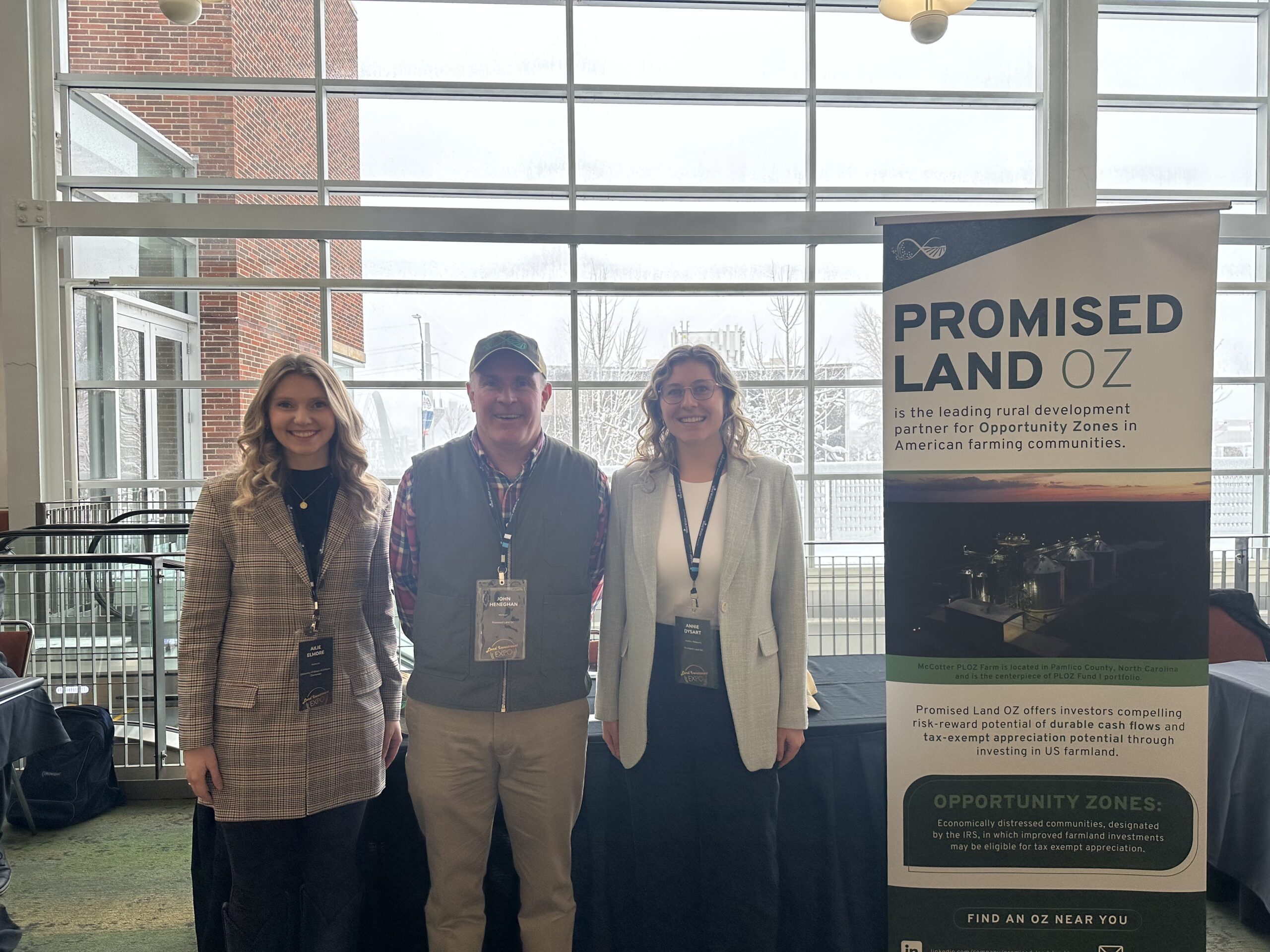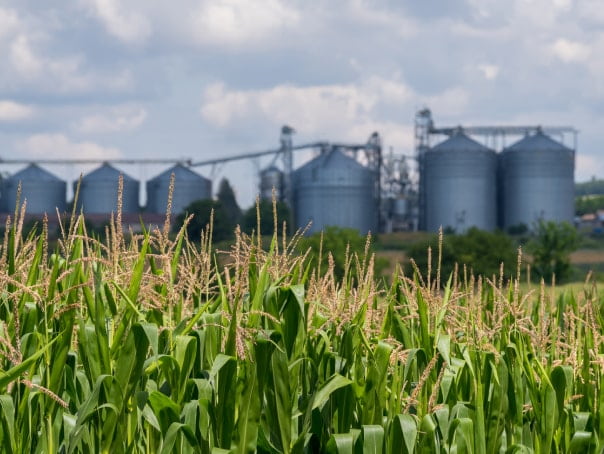
My name is Ailie Elmore, and I am an instructor at the University of Illinois at Urbana-Champaign in Agricultural and Consumer Economics. I grew up on a farm in central Illinois where my family grows corn and soybeans. I have worked on the farm my entire life from running the combine or grain cart in the fall to now being more involved in the management of the operation. Farming has changed immensely over the course of the last 150 years and working alongside my father, brother, and grandfather, Kek Elmore, has taught me that. My grandfather who lived to be 99 often talked about his experiences farming in the early 1900s when they used blind donkeys from the coal mine to farm and remembered picking corn by hand, ear by ear. Today we have tractors that don’t need us to steer, and many farmers must spend more time crunching numbers behind a computer than working in the field to ensure the success of the farm. Farming has evolved but one dynamic has remained constant – people need to eat, and American Farmers do their honest best to put food on as many tables in the world as they can. After transitioning from the “farmer’s daughter” to the farmer herself, I want to see this continue. The goal of the “Farmer’s Daughter’s Guide to Investing” series is to provide both institutional investors and agriculturalists with current investment knowledge from the perspective of a 5th generation farmer and economist.
“I think that farming is one of the great life callings. It has become very difficult now, but it is a great artistic, creative calling” – John O’Donohue, Irish Poet and Writer
Disclaimer: This is not tax or investment advice. Please see a tax or investment professional to see what is right for you.
What are Opportunity Zones?

I was blessed to have grown up with parents that were able to give me many opportunities in life including education, travel, and sponsorship of one of my most expensive hobbies: horses. However, growing up in a rural area I saw that many of my schoolmates or others in the community did not have these same opportunities. The rural poverty rate is close to 17% which is 3 percentage points higher than the poverty rate in urban America. While most of the United States has prospered due to urbanization and industrialization, rural America has largely been left behind with limited employment and education opportunities. Institutional investment in rural areas or areas of low economic development is scarce as these investments are seen as more risky and less scalable. Recently, the U.S. government decided to spur capital allocation to these rural and other economically disadvantaged communities, thus the opportunity zone program was born. The Opportunity Zones tax incentive was created under the Tax Cuts and Jobs Act by Congress in 2017. Investors are offered tax benefits for their investment in the program including a temporary deferral of capital gain tax, step-up in basis, and/or permanent exclusion of capital gains invested in the program depending on the length in which capital gains are held within the program. The program encompasses 8,764 communities in the U.S. and 5 U.S. territories which totals close to 35 million people with a median household income of $33,345. Governors of each state were able to nominate up to 25% of eligible areas with eligibility depending on employment and income levels. The goal is to revitalize these distressed communities by providing tax incentives for investors to spur economic development. 75% of the areas chosen are metropolitan areas with the rest being rural areas or Native American territories.
Map of Opportunity Zones in the United States
Qualified Opportunity Funds
Investors can purchase property directly in opportunity zones and then improve or build upon it to receive the Opportunity Zone (OZ) tax benefits described below. However, many institutional and individual investors would rather not have to be involved directly in the day-to-day management of real estate development projects or operating businesses. Qualified Opportunity Funds (QOFs) give investors the flexibility of the OZ tax benefits of the program while lessening the property or business management burden. QOFs must invest 90% or more of their capital within qualified opportunity zone properties and must provide for “substantial improvements” to the property, buildings, or equipment. These improvements can be significant for residential or commercial properties such as developing housing, senior living facilities, or workforce housing. While most of the opportunity zone program encompasses metropolitan property, some of the real property within designated OZ’s is farmland. The farmland in opportunity zones typically can meet the applicable improvement standards through the implementation of drainage tile or irrigation, organic conversion, or adding grain storage or green energy options like solar panels. Investment in farmland in opportunity zones can not only provide tax benefits with the attractive risk/return profile of farmland but also improve food production capacity for generations to come.
Opportunity Zone Program Tax Benefits

The Opportunity Zone Program is currently under review by lawmakers to extend the tax incentive period from 2026 (current end date) to 2028. The program offers investors three main tax benefits to attract capital into the program. The first benefit is a temporary deferral of taxes on capital gains invested in the program. Combining that with the next benefit which includes a step-up in basis for capital gains that are reinvested in the program by the end of 2028, the investment potential becomes very attractive. The basis is increased by 10% if gains are held in the fund for 5 years until 2028, then if gains are held within the fund for 6 years by 2028, the basis is increased an additional 5%. The third and final benefit is if the initial investment is held within the fund for 10 years, then it will have a permanent exclusion from taxable income once sold or exchanged. This tax exclusion applies just to capital gains appreciation after the initial investment in the qualified opportunity zone.
Example Investment in Farmland QOF

A challenge facing many farmers and landowners is the transfer of wealth to the next generation while not losing a significant amount of their wealth to taxes. As the saying goes, farmers are land rich but cash poor meaning many won’t have the cash available to pay those taxes. Let’s walk through a hypothetical situation. Let’s say we have a midwestern farmer named Bruce who owns just 100 acres debt free but could face long-term capital gains taxes on the property of $1,000,000 or more. Farmer Bruce wants to transfer the farmland to his daughter, Claire, but is likely going to be subject to capital gains tax on this $1,000,000 at a rate of 23.8%. Bruce is a farmer and would like to continue to see the agriculture industry thrive while benefiting from the risk/return profile of farmland that he has significant experience with. Bruce takes his $1,000,000 in capital gains and invests it in a qualified opportunity zone fund investing in farmland such as the Promised Land Opportunity Zone Fund. Let’s do the math on his investment under the proposed tax legislation. Since farmer Bruce intends to participate in the opportunity zone program in 2022, he would be eligible for the 10% and 5% step-up in basis. If farmer Bruce holds the capital gains in the QOF for the entire 10-year hold and the investment earns an internal rate of return of 9% (consistent with Promised Land’s Fund I portfolio expectations), Bruce’s tax savings would be substantial. By investing the $1,000,000 in capital gains in a QOF, he would have a total benefit of $597,212 at the end of the 10 years compared to if he made a taxable investment in farmland outside of a QOF. Combined with the compounding benefit of the investment, the QOF investment in farmland would yield the farmer a 4.8% annual return benefit compared to a non-QOF investment in farmland achieving the same 9% annual pretax return.
Note: This is not tax or investment advice. Please see a tax or investment professional to see what is right for you
How Can I Start Investing in Qualified Opportunity Zone Funds?
The opportunity zone program is a superb tax structure to hold farmland for the long-term as well as catalyze enhanced food production and economic development in underserved rural American communities. To get involved in the program, an investor could choose to invest directly in farmland but as we have discussed that comes with active management by the investor. Investment in an institutionally scaled qualified opportunity zone fund is an ideal scenario for most investors. There are only few existing farmland QOFs because of the relative newness of the program and the unique expertise required. The only truly scalable QOF investing in farmland is the Promised Land OZ. Promised Land is an aligned joint venture of “Best-in-Class” partners. Farm property management is provided by Farmland Partners (NYSE: FPI), a leading farmland REIT with $1 billion in assets. Fund management is led by Servant Financial, Ltd., a Chicago-based investment management firm founded in 2003.
Promised Land is devoted to “investing in rural American communities where you live, farm, and play.” As someone who has seen firsthand the disparities in economic and educational opportunities between country and metropolitan communities, I am encouraged by entrepreneurial organizations willing to invest their resources and time in rural America. Agriculture would not have progressed from farming with blind donkeys to GPS guided tractors without technological innovation and fertile investment in the future of food production. The Promised Land Opportunity Zone Fund wants to foster that same flywheel effect to bring about even more fruitful change to an industry that is responsible for feeding the entire world.




